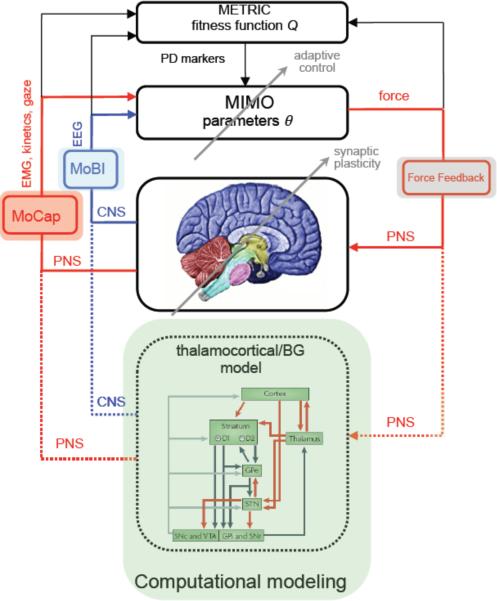Figure 1.
A system framework towards neurofeedback noninvasive rehabilitation of movement disorders by means of closed-loop brain-machine-body interfaces. Signals from the central (CNS) and peripheral (PNS) nervous system are recorded and monitored by the mobile brain/body imaging (MoBI, [95]) and motion capture (MoCap) systems, respectively. Electroencephalography (EEG), electromyography (EMG), kinetics and eye-tracking signals provide inputs to the MIMO (multiple-input and multiple-output) module. The MIMO module outputs force feedback to external devices (haptic robots, cyber glove or exoskeleton) that is sensed by the brain via the PNS. The force is generated by adaptive control of the MIMO module's parameters (θ). The fitness function Q from the METRIC module is computed from the EEG, EMG and force signals, and outputs PD markers to the MIMO module. Oblique gray arrows indicate adaptive processes. Dashed lines indicate optional elements. Once tested and validated in the neurofeedback framework by comparing the forward modeling (see text for details) of its outputs with those monitored by MoBI and MoCap, the thalamocortical/BG model can be used as a model-based module providing additional inputs to the METRIC module helping constructing a better fitness function Q. Red and blue lines indicate information from the PNS and the CNS, respectively.

